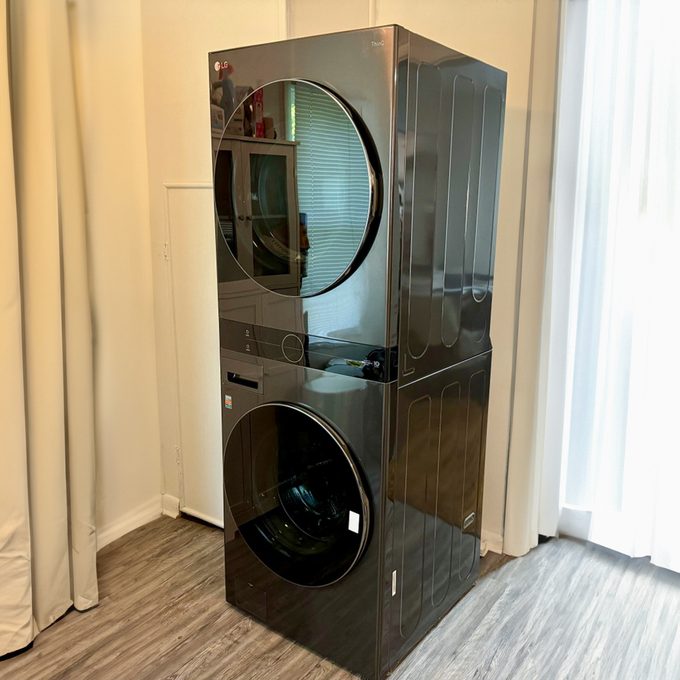
Drink-drive deaths up 7% in a decade – is it time for breathalysers in cars?

The number of drink-driving deaths on Britain’s roads have increased 7 per cent in the past 10 years, new figures published by the Department for Transport show.
It estimates 260 people died in crashes in 2023 in which a driver was over the alcohol limit.
While this represents a 14 per cent reduction on the previous 12 months, it is still higher than fatalities linked to drink-driving in 2013.
The data suggests 16 per cent of road deaths in 2023 involved drink-driving.
These new statistics come in the wake of fresh news that Labour is considering adopting EU rules around car safety features, which would mandate all models sold in Britain need equipment to facilitate the installation of in-car breathalysers.
This would allow ‘alcolock’ breathalysers to be fitted to cars of convicted drink drive offenders on court orders. They prevent drivers from being able to start the car’s engine until they supply a legal sample of breath.
The DfT’s figures show that 5 per cent of casualties of all severities in 2023 occurred in drink-drive collisions.
However, the breakdown varies across different countries.
While the 5 per cent figure is consistent for England and Scotland – the latter having stricter drink drive limits – the average is higher in Wales (7 per cent).
‘In general, the proportion of collisions involving a drink-driver has been higher in Wales over the past decade,’ the report said.
Meanwhile 124 people died due to drug driving in 2023, up from 90 people in 2022, the numbers show.
The Department’s published data also highlights a greater proportion of drink-drive collisions occurring late at night and in the early hours of the morning, reaching a peak of 8 per cent occurring between 11pm and midnight.
The lowest proportion of drink-drive collisions occurred between 11am and midday, with 1 per cent.
The data is also evidence male drivers are over-represented in drink-drive collisions.
The majority of drivers involved in road injury collisions overall are men, with an even higher proportion of drink-drivers being male.
In 2023, 80.6 per cent of drink-drivers were male.
However, males made up only 69.3 per cent of drivers (excluding cyclists and horse riders) involved in all collisions where the gender of the driver is known.
RAC road safety spokesperson Rod Dennis called the figures ‘disturbing’ and a ‘frightening number of lives lost’ on the UK’s roads.
‘It’s simply unacceptable that an estimated 260 people a year lose their lives as a result of drink-drivers,’ he said.
‘It remains the case that the proportion of road deaths where drink-driving was a cause is at a similar level to the late 1980s. Drugs, too, are playing an increasing role in fatalities and are now behind a record number of fatal collisions.
‘A new approach to tackling these repugnant crimes is desperately needed. We hope this will be a key part of the Government’s forthcoming road safety strategy.’
Jack Cousens, head of roads policy for The AA, added: ‘While drink driving fatalities fell by 14 per cent between 2022 and 2023, drug driving deaths rose by 38% during the same period.
‘This is truly shocking, and more needs to be done to stop people getting behind the wheel while impaired.
‘More education, roadside testing and enforcement are key to get the message across that driving under the influence won’t be tolerated.’
Nicholas Lyes, director of policy and standards at road safety charity IAM RoadSmart, says Britain has become ‘stuck in a dangerous rut’ of not being able to reduce the death toll on our roads.
‘We must redouble our efforts on enforcement, providing the police with the necessary tools to clamp down on drink drivers while reviewing our approach to both first time and repeat offenders,’ he told us.
The drink-drive limit in England, Wales and Northern Ireland is 80mg of alcohol in 100ml of blood.
Nowhere else in Europe has a limit above 50mg/100ml.
The Scottish Government reduced its limit to that level in 2014.
Driver and Vehicle Licensing Agency statistics previously obtained by the PA news agency revealed 27,837 British motorists were convicted of drink-driving multiple times in the 11 years to 20 July 2024.
Some 372 were caught at least four times, including four who were prosecuted on seven occasions.
Matt Pernet, head of Direct Line Motor Insurance, says a recent study it conducted found that 82 per cent of people failed to correctly name the legal drink drive limit.
‘Relying on personal judgement, previous experiences, or myths, like drinking water or eating a meal will lessen the effects of alcohol, presents a significant risk to all drivers,’ he said.
‘Alcohol affects everyone differently and there is no reliable way to judge if you are legal to drive other than taking a breathalyser test. But even then, legal does not necessarily mean safe.’
The insurer breathalyser tested 97 people across in Glasgow, Northampton, and Cardiff who had recently consumed alcohol.
Over a quarter expected to still be under the legal limit at the time test but two fifths (43 per cent) measured on or above it.
None of the 97 participants could accurately articulate the current legal limits for drink driving, yet two in five said they would rely on their own judgement and how they felt before deciding whether they were safe to drive or not.
Labour ‘considering’ EU car safety tech – including breathalyser facilitation
The report comes as Labour is said to be preparing to follow European laws and mandate that all new cars are fitted as standard with a raft of safety features, including black box-style recorders and equipment that enables breathalyser installations.
Sir Keir Starmer’s Government and the UK’s automotive trade body has argued that differences in car manufacturing between Britain and Europe will lead to higher costs being passed on to the customer.
But critics argue that the PM would be turning his back on the nation’s freedom to set out its own regulations as part of Brexit.
Lord Hendy, Minister of State for the Department for Transport, stated earlier this week in parliament that the government ‘takes an explicit presumption in favour of alignment’ in regard to how cars are manufactured.
He added that the Government would be ‘considering options for requiring the fitment of the safety technologies mandated by the EU’s general safety regulation’.
GRS2 regulations have been introduced over a three-phase period in the EU, beginning in July 2022.
Included among the 19 mandatory features demanded for new cars entering European showrooms from 7 July 2024 is automatic speed limiters, driver drowsiness alert, Emergency Lane Keeping Systems, and ‘Alcohol Interlock Installation Facilitation’ – or AIIF. This would allow for the application of aftermarket alcohol interlock devices in vehicles.
Alcolocks are already used in Finland, Belgium, New Zealand, Australia, Canada and many parts of the US.
A recent poll found 53 per cent of drivers would support court-ordered breathalysers being fitted to cars of convicted drink-drivers in Britain.
‘We’ve consistently been calling for a change in approach when it comes to reducing alcohol-related road deaths, as it’s clear the status quo isn’t working,’ the RAC’s Rod Dennis said.
‘RAC research shows drivers are supportive of courts being given the powers to mandate the fitting of alcohol interlocks to offenders’ vehicles to prevent them driving drunk again. This has the potential to reduce drink-drive casualties, especially among habitual offenders.
‘Since 2022 we have urged the Government to consider mandating all new vehicles have interfaces that allow alcolocks to be fitted easily.
‘We are also supportive of police being given the powers to immediately disqualify any driver who fails a drink or drugs test at the roadside.’



